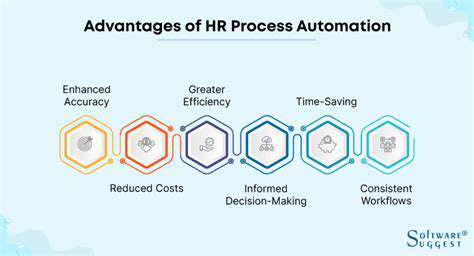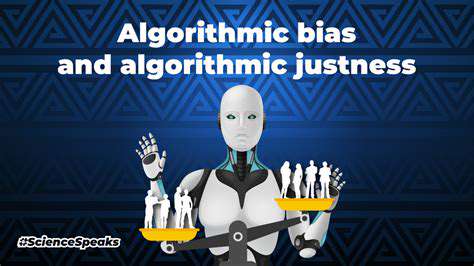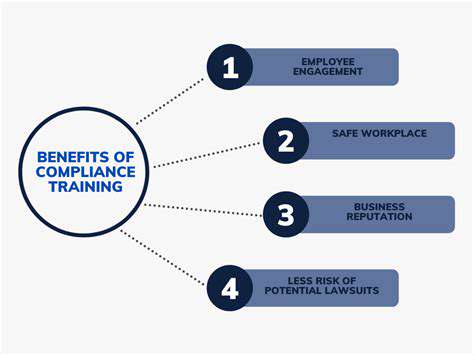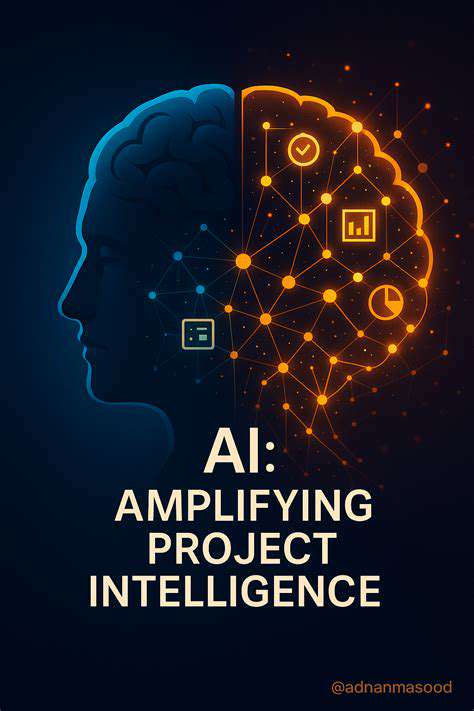Identifying the Sources of Bias in AI
Understanding Algorithmic Bias
Algorithmic bias in AI systems stems from the data used to train them. If the training data reflects existing societal biases, the AI model will likely perpetuate and even amplify those biases in its outputs. For example, if a facial recognition system is trained primarily on images of light-skinned individuals, it may perform less accurately on images of people with darker skin tones. This inherent bias, often invisible to the developers, can lead to discriminatory outcomes in areas like loan applications, hiring processes, and even criminal justice.
Furthermore, the design choices made by developers can also introduce bias. The specific features selected for analysis, the weighting given to different data points, and the algorithms themselves can all contribute to skewed results. A model trained to predict future crime rates, for instance, might disproportionately flag certain neighborhoods or demographic groups if the underlying data or model assumptions are flawed or biased.
Data Collection and Representation
The quality and representativeness of the data used to train AI models are crucial for mitigating bias. Data collection methods must be carefully considered to ensure that the dataset accurately reflects the diversity of the population it will serve. This includes actively seeking out and including underrepresented groups in the data. Simply collecting more data isn't enough; the data must also be appropriately balanced and representative of the diversity of the real world.
Insufficient or unbalanced data can lead to skewed results. For example, if a dataset used to train an AI model for loan applications has a higher proportion of applications from one particular demographic group, the model might learn to favor that group, even if it doesn't explicitly discriminate against other groups.
Model Design and Architecture
The specific architecture and design of an AI model can also introduce or exacerbate existing biases. Some models are inherently more susceptible to bias than others. For instance, certain machine learning algorithms, like decision trees, can amplify biases present in the training data. Therefore, selecting appropriate models and carefully considering their inherent properties is a critical step in the process.
Developers need to scrutinize the internal workings of their models, understanding how they arrive at their conclusions. This includes analyzing the model's decision-making process to identify potential biases or errors in the logic of the algorithm. Transparency and explainability in model design are becoming increasingly important to identify and mitigate bias.
Evaluation and Monitoring
Regular evaluation and monitoring of AI systems are essential for identifying and addressing bias. This involves testing the model's performance across different demographic groups and identifying any disparities in accuracy or outcomes. Ongoing monitoring can help detect and correct bias as it emerges, allowing for continuous improvement of the AI system.
Evaluation metrics should go beyond simple accuracy measures. Metrics should consider fairness and equity across different subgroups. This requires a deeper understanding of the potential impact of the AI system on different communities and the development of appropriate evaluation frameworks that account for these impacts. This proactive approach will help to ensure AI systems are deployed responsibly and equitably.
Addressing Bias in Real-World Applications
Addressing bias in AI systems requires a multi-faceted approach that extends beyond the technical aspects of model development. It necessitates a commitment from developers, policymakers, and stakeholders to understand and mitigate the potential for bias in real-world applications. This includes establishing clear guidelines and standards for AI development, promoting ethical considerations, and fostering collaboration among researchers, practitioners, and the wider community to share knowledge and best practices in addressing bias.
Furthermore, ongoing education and awareness campaigns can empower individuals and organizations to understand the potential for bias in AI systems, encouraging more thoughtful and responsible use of these powerful technologies. Accountability and transparency are crucial in ensuring that AI systems are developed and deployed in a way that benefits all members of society.

The Role of Data Diversity and Representation
Data Diversity in AI Systems
Data diversity is crucial for building robust and unbiased AI systems. A diverse dataset, encompassing various demographics, experiences, and perspectives, ensures that the AI model learns from a wide range of inputs. This broad representation helps to mitigate the risk of perpetuating harmful stereotypes or biases that might be present in a dataset lacking diversity. Without sufficient diversity, AI models can develop inaccurate or unfair outputs, leading to discriminatory outcomes in areas like loan applications, hiring processes, and even criminal justice.
The absence of diverse data can result in AI systems that disproportionately favor certain groups over others. For example, if a facial recognition system is trained primarily on images of light-skinned individuals, it may perform less accurately or even fail entirely when encountering images of individuals with darker skin tones. Ensuring data diversity is thus a fundamental step towards building fair and equitable AI systems.
Representation of underrepresented groups
Underrepresented groups, including those based on race, ethnicity, gender, socioeconomic status, and disability, often lack sufficient representation in datasets used to train AI systems. This lack of representation can lead to AI models that fail to accurately reflect the needs and experiences of these groups, potentially perpetuating existing societal biases or creating new ones. Addressing this issue requires a concerted effort to collect and utilize data from these groups, ensuring that their voices and perspectives are heard and considered.
Furthermore, careful consideration must be given to the potential for unintended biases in the collection and processing of data from underrepresented groups. Data collection methods must be designed with sensitivity and respect for the cultural norms and values of these groups, to avoid inadvertently creating or exacerbating existing biases.
The Impact of Bias on AI Model Outcomes
Bias in AI systems can manifest in various ways, leading to skewed outcomes in numerous applications. For instance, in loan applications, biased models might unfairly deny loans to individuals from certain demographic groups, hindering their financial opportunities. In criminal justice, biased models could lead to higher rates of false positives for individuals from particular racial or ethnic backgrounds, resulting in wrongful arrests or convictions. These examples highlight the profound impact that biases in AI systems can have on individuals and society.
The consequences of biased AI systems extend beyond individual harm. They can perpetuate existing inequalities and create new barriers to social mobility. Recognizing and mitigating these biases is essential to ensure that AI systems are used responsibly and equitably.
Strategies for Addressing Data Bias
Addressing data bias requires a multi-faceted approach that involves careful data collection practices, rigorous model evaluation, and ongoing monitoring. Efforts to actively include underrepresented groups in data collection are vital. Additionally, techniques to identify and mitigate biases within datasets are essential, including the use of bias detection tools and algorithmic fairness metrics. Continuous monitoring and evaluation of AI systems in real-world applications are crucial to identify and address any emerging biases.
Ensuring Ethical AI Development
Ethical considerations are paramount in the development of AI systems. Building AI systems that are fair, transparent, and accountable requires a commitment to data diversity and representation from the outset. This commitment includes understanding the societal impact of AI systems, engaging with diverse stakeholders, and developing clear ethical guidelines for AI development and deployment. This proactive approach ensures that AI systems are used to advance social good and address pressing societal challenges, rather than perpetuating existing inequalities.
Organizations and developers must prioritize ethical considerations throughout the entire AI lifecycle, from data collection to model deployment, to ensure that AI systems are used responsibly and equitably. This requires a commitment to transparency, accountability, and fairness, and an ongoing effort to identify and mitigate potential biases in AI systems.
The Ethical Implications and Future Directions

The Growing Importance of Ethical Considerations
As artificial intelligence (AI) systems become increasingly sophisticated and integrated into various aspects of our lives, the ethical implications of their development and deployment become paramount. We must carefully consider the potential consequences of these technologies on individuals, society, and the environment. Ignoring these considerations could lead to unintended and potentially harmful outcomes, ranging from biased decision-making to job displacement and even existential risks.
The need for ethical frameworks and guidelines is no longer a theoretical concern but a practical necessity. Establishing clear ethical principles and standards will help ensure that AI systems are developed and used responsibly, promoting human well-being and societal progress.
Bias and Fairness in AI Systems
One of the most significant ethical concerns surrounding AI is the potential for bias in algorithms. AI systems are trained on data, and if that data reflects existing societal biases, the AI system will likely perpetuate and even amplify those biases in its decision-making processes. This can lead to unfair or discriminatory outcomes for certain groups of people.
For example, facial recognition systems trained on predominantly white datasets might perform less accurately on people of color. Addressing this issue requires careful attention to data collection, algorithm design, and ongoing monitoring of AI systems to identify and mitigate biases.
Transparency and Explainability
Many AI systems, particularly deep learning models, are black boxes, meaning their decision-making processes are opaque and difficult to understand. This lack of transparency can make it challenging to identify and correct errors, and to ensure accountability. A lack of understanding of how AI systems arrive at their conclusions can undermine trust and confidence in their use.
Accountability and Responsibility
Determining who is responsible when an AI system makes a mistake or causes harm is a complex issue. Is it the developer of the algorithm, the user of the system, or the organization that deployed it? Establishing clear lines of accountability is crucial for ensuring that those responsible for harmful actions are held accountable.
Job Displacement and Economic Impact
The increasing automation potential of AI raises concerns about job displacement and its impact on the global economy. As AI takes over tasks previously performed by humans, there's a possibility of significant job losses across various sectors. This necessitates proactive measures to support retraining and upskilling efforts to help workers adapt to the changing job market.
Privacy and Data Security
AI systems often rely on vast amounts of personal data to function effectively. Protecting the privacy of this data and ensuring its secure handling is essential to prevent misuse and abuse. Robust data protection regulations and ethical guidelines are necessary to safeguard personal information from breaches and unauthorized access.
The Future of Human-AI Interaction
The development of AI raises profound questions about the future of human-AI interaction. How will humans and AI systems collaborate and complement each other? Will AI augment human capabilities or will it ultimately change our fundamental understanding of what it means to be human? These are complex questions that require careful consideration and ongoing dialogue among experts, policymakers, and the public.
The potential for transformative societal shifts is undeniable, requiring a thoughtful and proactive approach to navigating the ethical implications of AI.











